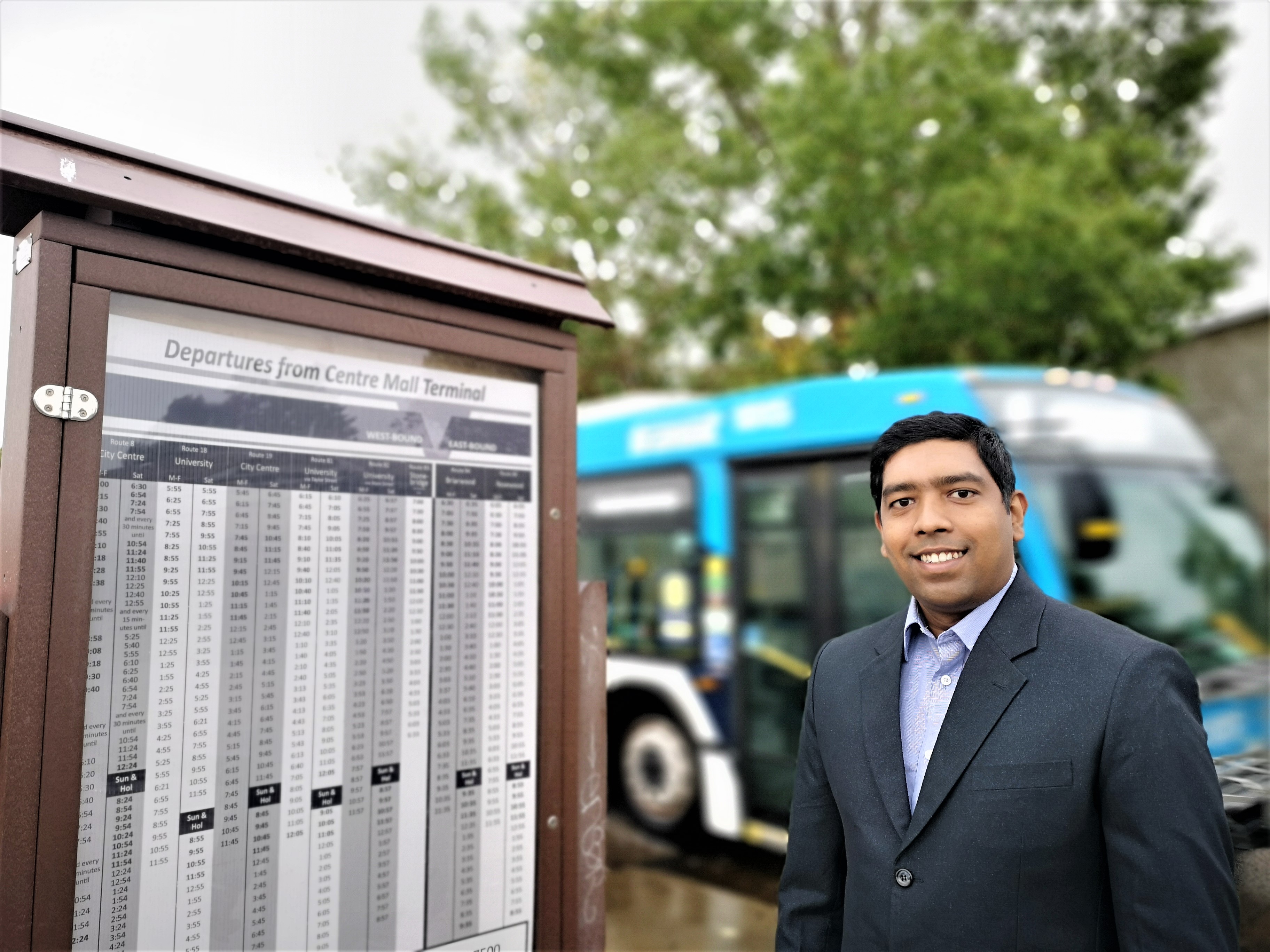
Driving a more efficient transit system
Dr. Debajyoti Mondal, in partnership with Saskatoon Transit, is undertaking a project to improve transit services in the Bridge City and beyond. The development of fast and trustworthy transit analytics will evaluate ridership data to uncover their behaviors and transportation needs, allowing planners to make data-driven decisions to optimize transit services.
By Ellen RedlickTransit systems are highly complex and generate a massive amount of ridership data every day. Saskatoon Transit planners strive to understand transit efficiency and ridership behavior from this data, which is a difficult task due to its size and complexity. Real-time data analytics that integrates predictive models and takes riders’ priorities into account can greatly help planners to optimize resources and better meet the riders’ needs.
In a new collaboration between Usask and the City of Saskatoon, Dr. Mondal plans to use big data techniques to design fast, reliable, and explainable algorithms that will bring data analysis time from hours to seconds, visualize hidden patterns, and predict ridership changes by bridging the gap between riders and planners.
Algorithms and prediction models will improve the understanding of how the transport sectors are impacted by public mobility behavior in a variety of scenarios, such as seasonal changes, road construction, city expansion, or emergency situations like the COVID-19 pandemic.
To speed up the analytics platform, new algorithms will stream and process the data in real-time by leveraging big-data technologies and generate visualizations accelerated by cutting-edge graphics processing units.

A challenge of analyzing ridership trends and inferring riders’ priorities is that the observed ridership behaviors are open to interpretation. To achieve a highly accurate and trustworthy ridership prediction, Dr. Mondal will develop models that learn from multiple data sources such as ridership information, neighborhood demographics, and public surveys.
In alignment with Usask’s Pathways to Equity initiative, equity is an important component of this project. Transit planning often suffers from a lack of representation from certain groups, including Indigenous people, newcomers, people with disabilities, and those who experience homelessness and poverty. Researchers will investigate the impact of such data bias on the algorithms and make special efforts to mitigate any potential bias in the interpretation of the research results.
The algorithms and visualizations generated through this research will be integrated into the Saskatoon Transit analytics system and public-facing dashboards for the timely dissemination of research results. The research will be conducted in a partnership with Saskatoon Transit and with collaborators Dr. Kevin Stanley and Dr. Ehab Diab at USask.
This system will change the landscape of transit analytics, allowing city and transit planners to make data-driven decisions and optimize transit services based on dynamic changes.

